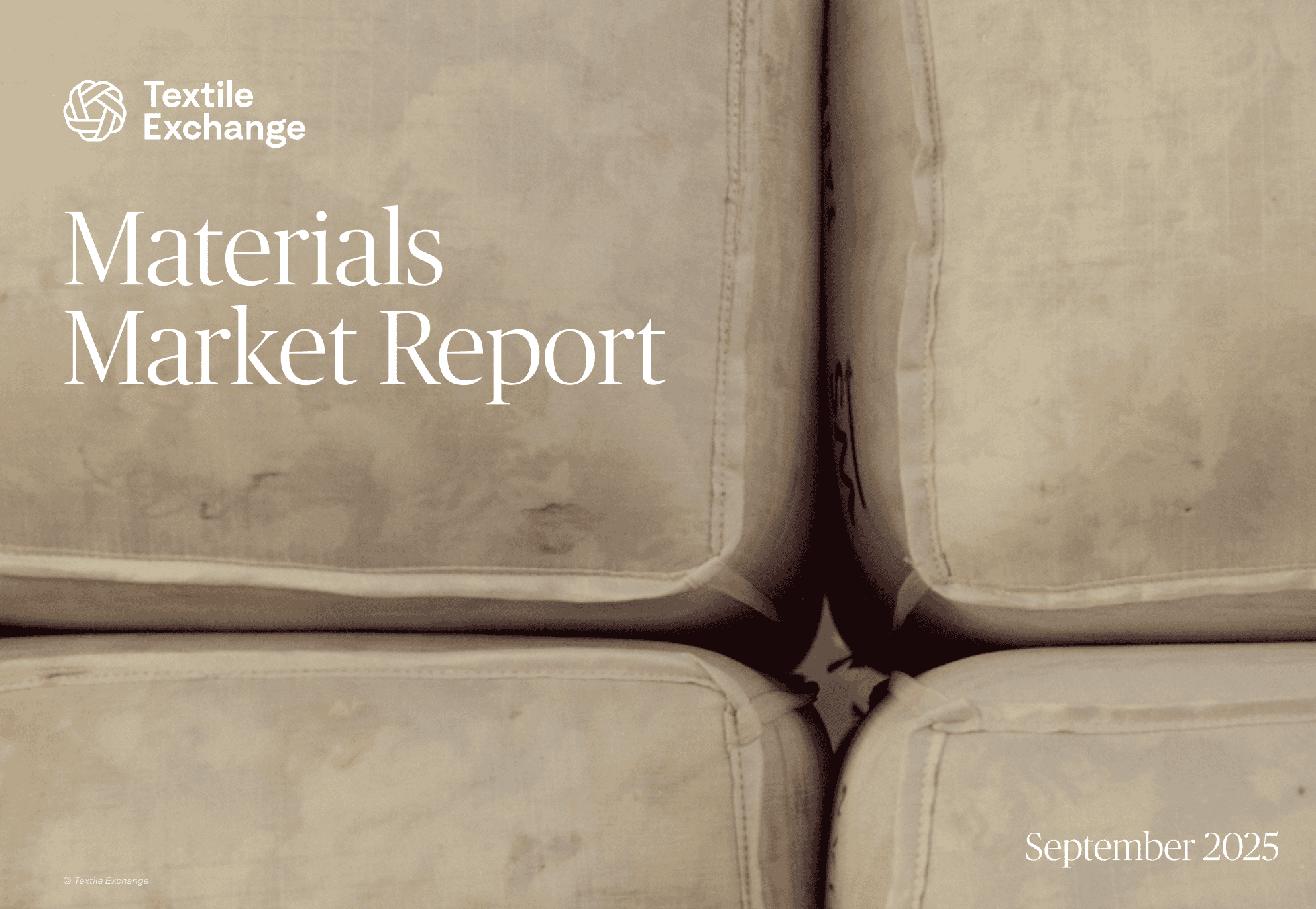Materials Market Report 2025

Fiber production continues to increase according to Textile Exchange’s annual Materials Market Report, but uptick in certified production shows positive trend.
Textile Exchange’s Materials Market Report has been the leading source for global fiber and materials production volumes for the last decade. It helps inform the textile industry’s efforts to reduce emissions associated with raw material production in line with a 1.5°C temperature rise pathway.
The latest report, which looks at total fiber volumes used for apparel, home textiles, footwear, or any other application, shows that global fiber production increased from 125 million tonnes in 2023 to 132 million tonnes in 2024.
This has more than doubled since 2000 and increased by approximately 34 million tonnes since the Paris Agreement in 2015, when countries around the world committed to keeping global temperatures below 2°C and ideally below 1.5°C. It now equates to around four tonnes of fiber produced every second. Production is expected to reach around 169 million tonnes in 2030 if business continues as usual.
The biggest increase in global fiber production was in fossil fuel-based synthetics, with polyester continuing to be the most widely produced fiber. It now makes up 59% of total global fiber output of which 88 % is fossil-based. Recycled polyester is still primarily made from plastic bottles (98%).
These findings again highlight the continued reliance on new virgin fossil-based synthetic materials, threatening to undermine the industry’s commitments to its climate goals. It also shows the current limitations of textile-to-textile recycling and an urgent need for innovative solutions.
Amid these concerns, there were positives. Data shows 34% of global cotton production now comes from certified sources, two-thirds of manmade cellulosic fibers (MMCFs) are produced using certified or controlled feedstock, and half of all mohair, is certified to Textile Exchange’s Responsible Mohair Standard. This highlights the important role that companies can play in reporting their progress and investing in sourcing fibers from recognized standards and certification programs. Both practices help the industry track progress and provide credible verification mechanisms.

Key takeaways from the report
- Global production continues to break records: Approximately 132 million tonnes of fibers were produced globally in 2024, up from around 125 million tonnes in 2023. This has more than doubled since 2000 and increased by approximately 34 million tonnes since the Paris Agreement in 2015, when countries around the world committed to keeping global temperatures below 2°C and ideally below 1.5°C. Production is expected to reach around 169 million tonnes in 2030 if business continues as usual.
- Fossil-based synthetics are driving the surge: Polyester continues to be the most widely produced fiber, making up 59% of total global fiber output of which 88 % is fossil-based. In terms of volume, polyester fiber production increased from around 71 million tonnes in 2023 to around 78 million tonnes in 2024.
- Recycled polyester increased but market share falls: In total, recycled polyester increased from around 8.9 million tonnes in 2023 to approximately 9.3 million tonnes in 2024. But because of the larger increase in virgin polyester production, its market share declined slightly from 12.5% in 2023 to 12% in 2024.
- Cotton’s share of the global fiber market falls slightly: Although it remains the second most widely produced fiber after polyester, global fiber production fell slightly by 1% to 19%. In terms of volume, it decreased from 24.8 million tonnes in 2022/23 to 24.5 million tonnes in 2023/24.
- The market share of recycled fibers remained stable: The percentage of recycled fibers is similar to 2023, at 7.6% in 2024. The vast majority of this was recycled polyester made from plastic bottles, which accounted for 6.9% of all fiber produced worldwide. Overall, less than 1% of the global fiber market was from pre- and post-consumer recycled textiles.
- Fibers from certified sources saw some increases: 34% of global cotton production now comes from certified sources, two-thirds of manmade cellulosic fibers (MMCFs) are produced using certified or controlled feedstock, and half of all mohair, is certified to Textile Exchange’s Responsible Mohair Standard.
Previous editions of this report
FAQS
Get in touch
If you have any questions about the Materials Market Report, please look at our FAQ page. If this doesn’t answer your question, feel free to get in touch with us.